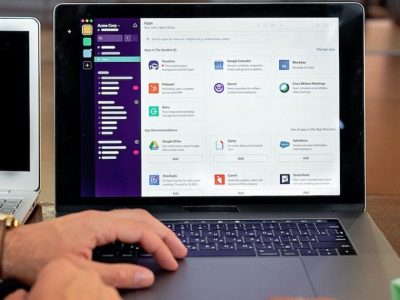There’s no arguing the convenience and adaptability of a monitor as a display, despite the fact that many of us use laptops. Combining a laptop with a monitors may provide a world of freedom. A monitor may be utilized as an additional display to run applications while working in another window on a laptop. Monitors also allow you to work or play without having to hunch over a tiny screen. Monitors offer a multitude of functions and selecting one might be difficult.
- Selecting the appropriate size and resolution
Projectors, like televisions, come in a variety of sizes. They normally range in size from 19-inch models to 32-inch and larger ones. A 23- or 24-inch monitor is an excellent starting point for anybody who uses a computer display for business. Screen sizes and resolutions are also connected. For instance, the majority of 22- and 24-inch monitors support Full HD (1920 x 1080) resolutions, however, a 27-inch 4K monitor may not be advised. 4K (3840 x 2160) monitors are particularly suitable for 32-inch and bigger displays. Smaller displays with greater resolutions produce text that is difficult to see, necessitating a close viewing distance.
- How do aspect ratios work?
The aspect ratio is the screen’s shape. Some display screens are broader than others. Earlier monitors were typically square-shaped. 16:9 is the most popular aspect ratio, and it is found on the majority of laptops and televisions. There are slightly taller monitors with an aspect ratio of 16:10 that provide a bit more vertical space, which is more useful if you frequently work with spreadsheets.
- Choosing between TN, IPS, and VA panels
Monitors rely on numerous underlying technologies. Popular ones are TN because they have the lowest latency, but they are not known for their colour reproduction, colour range, or viewing angles. If you are a gamer looking for a monitor with a high refresh rate, you may find that the majority of monitors use TN panels. IPS panels are LED-based panels, similar to TN panels, but they produce more accurate colours and wider viewing angles.
- Refresh rates and displays for gaming
The most common refresh rate for monitors has been 60Hz, which is sufficient for text reading, web browsing, and general productivity. Many displays now come with refresh rates ranging from 100Hz to 120Hz, 166Hz, and even 240Hz, which is ideal for gamers playing the newest blockbusters. The greater the refresh rate, the more fluid the graphics will look.
- Connectivity options are available on modern displays.
Monitors are more dependent on connectivity than other gadgets. Monitors may be used as televisions, but they must be linked to a desktop or laptop computer. Some laptops may use conventional HDMI connections, while others may use DisplayPort, more modern connectivity. The most recent laptops may employ Type-C connections to connect to external displays. To avoid the complication of purchasing third-party adapters and cables, it is vital to get a monitor that supports these. Consider your options in light of your laptop’s port type.
- Now available on computer monitors are intelligent functions.
Some monitors share characteristics with televisions. Some of them include comprehensive interfaces that enable the display to function as a Smart TV. Even without a connected laptop or desktop computer, you may surf the web, and view Netflix, YouTube, and other streaming services with the multitude of applications available. In addition, they may be utilized as wireless monitors with a laptop, smartphone, or tablet serving as the source. On such displays, screen mirroring is typical. If you’re searching for a monitor that doubles as a Smart TV, you may want to consider one of them, despite their higher price.
- Other controls and features
Old monitors used cumbersome buttons and even knobs. Today’s monitors have progressed to the point that some are equipped with touch controllers and others with remotes, similar to TVs. Calibration of the display necessitates fiddling with the monitor’s controls, despite the fact that you won’t need to continually modify settings. Controls that are simple to reach may make this work much simpler. If you have many inputs, it is also helpful to know that you may switch from one input to another with the touch of a single or two controls.
Conclusion:
Monitors and televisions are completely different products from other electronic products such as microwaves. Monitors often feature denser panels, reduced latency, and more connection possibilities than televisions. All of these advantages make monitors suitable for use with a desktop computer or laptop.













Comments